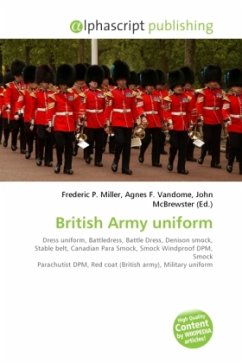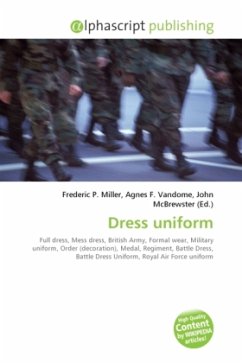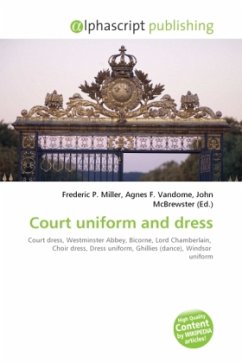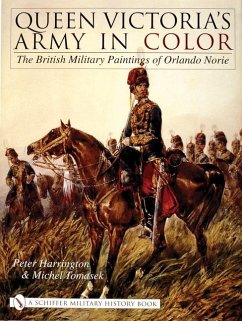
British Army uniform
Versandkostenfrei!
Versandfertig in 6-10 Tagen
23,99 €
inkl. MwSt.

PAYBACK Punkte
12 °P sammeln!
The British Army uniform developed along roughly the same lines as uniforms in other European armies. Its signature colour had become standardised as red for both infantry (foot) and cavalry (mounted) units by the end of the 17th century, except for the Royal Horse Guards and Royal Artillery who wore dark blue; then khaki (for everyday wear) and blue (for parade) in the 1930s. Netherwear and equipment followed European fashion. Exotic costume, such as that of hussars and zouaves, was either embraced late and toned down, or not embraced at all. The history of the British Army uniform is notable...
The British Army uniform developed along roughly the same lines as uniforms in other European armies. Its signature colour had become standardised as red for both infantry (foot) and cavalry (mounted) units by the end of the 17th century, except for the Royal Horse Guards and Royal Artillery who wore dark blue; then khaki (for everyday wear) and blue (for parade) in the 1930s. Netherwear and equipment followed European fashion. Exotic costume, such as that of hussars and zouaves, was either embraced late and toned down, or not embraced at all. The history of the British Army uniform is notable for an early and even eager embrace of camouflage in the form of khaki during the late 19th century. This reflected the exigencies of colonial war and the freedom allowed, and taken, by many of the officers who fought it. But it may also have had an aesthetic impulse. Armies in Europe were settling on mostly dark blue tunics and black equipment as a halfway house between display and practicality. This was not possible for the British army, wedded as it was to red tunics which in turn required white equipment to look pleasing.












